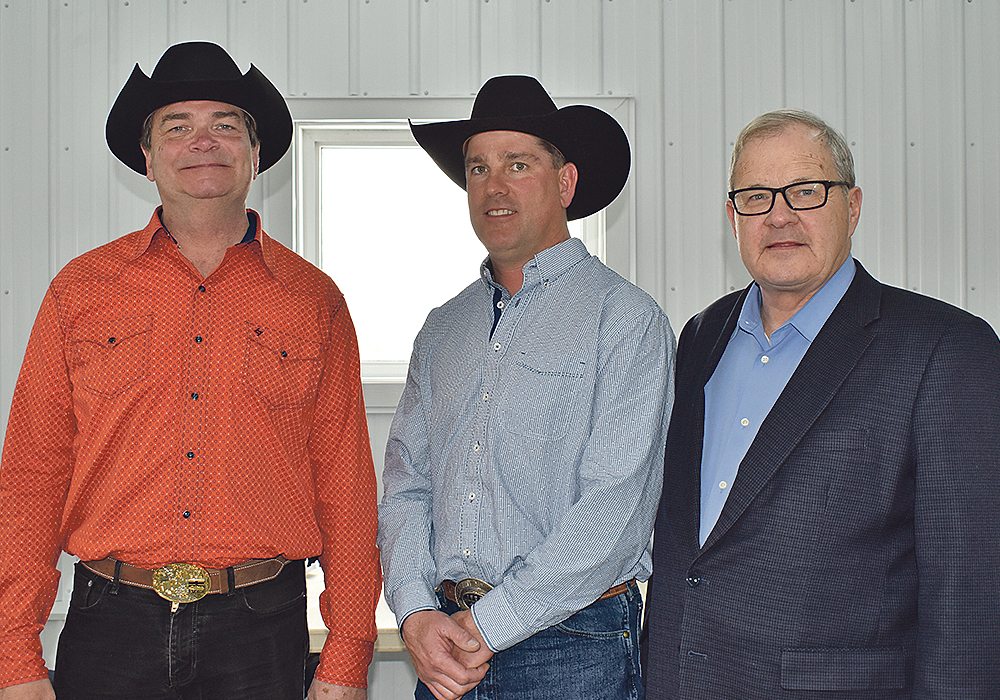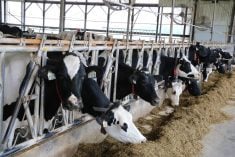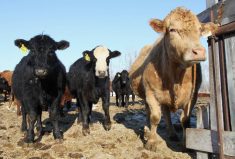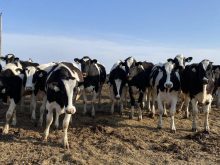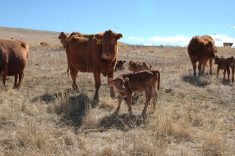The tuberculosis scare in that province saw 11,500 cattle destroyed and cost governments up to $54 million
JENNER, Alta. — The investigation into Alberta cases of bovine tuberculosis has successfully concluded, but like many successes, it came at a high cost.
Some 11,500 animals were destroyed in the Jenner region of southeastern Alberta, with only six found to be infected. Federal and provincial compensation provided to ranchers who lost their herds cost $39 million and another $15 million was made available for extraordinary costs related to the quarantine.
The emotional toll it took on ranchers who lost their herds is not as easily quantifiable.
Many of them gathered at the Osadczuk ranch March 25 to meet with federal Agriculture Minister Lawrence MacAulay and provincial Agriculture Minister Oneil Carlier to recognize the end of the investigation.
Weather conditions were a weird reflection of the investigation: a fog in the morning reminiscent of uncertainty in the early stages, followed by weak sunlight in the afternoon, akin to the investigation’s end.
“It’s a happy day,” said Osadczuk.
“Absolutely happy. We’re at the tail end of it. We’re at the tail end of winter and we’re at the tail end of the TB investigation.”
The six TB positive cattle came from the Osadczuk herd. They were discovered after one cow, exported to the United States, was found with the illness. As a reportable disease, the discovery triggered a Canadian Food Inspection Agency investigation that began in October 2016 and extended until February.
Read Also

Farming Smarter receives financial boost from Alberta government for potato research
Farming Smarter near Lethbridge got a boost to its research equipment, thanks to the Alberta government’s increase in funding for research associations.
Commingled cattle in area community pastures brought many ranchers into the investigation. Trace-outs and trace-ins, necessary to the process, involved still greater numbers.
Chris Hofer, manager of beef cattle at the Jenner Hutterite Colony, recalls getting the news that the herd of 290 Red Angus-Simmental cattle would be destroyed.
“I didn’t think the sun would ever shine again,” he said.
“At least the good cows went into the food chain, but the calves, the way they were murdered and just buried, that’s the way it is, I guess. What a waste of meat.”
He also regrets the loss of genetics in the colony herd and in those of fellow ranchers.
“Everybody’s herd here was 30 years in the making, possibly more,” he said, adding he hopes to regain the results realized by the former herd.
“All we can do is try. In this country, you have to keep trying. You can’t give up.”
The Jenner region is typically dry and in fact suffered losses in prairie fires last fall.
Osadczuk speculated those same harsh conditions might have limited the TB impact.
“It would be the most inhospitable place for a bacteria bug like TB to live, so how did we get it and how did it incubate? The fact that it didn’t spread I guess says something,” said Osadczuk.
The investigation did not uncover the source of the original infection.
“I’d like to know, but sometimes you have to be careful what you wish for. As far as management, I can’t say that we’d change a thing.”
MacAulay and Carlier praised the co-operation of all ranchers involved in the investigation.
“It was a tragedy for a lot of these producers,” said Carlier.
“They lost their herds. But I think they were very thankful about the response they got from the government and the response that we got from the industry as well. We were able to maintain Alberta as a bovine tuberculosis free zone. That’s very important.”
MacAulay made a similar comment, with a reference to Osadczuk.
“He understands how important the beef industry is to this part of the country and he also understands how important it is for the world to realize that we have a very open system, we have a science based regulatory system and if we have a problem we don’t hide it. We indicate right out what we’re doing and cleaning it up as quick as we possibly can, and that’s what we did here.”




